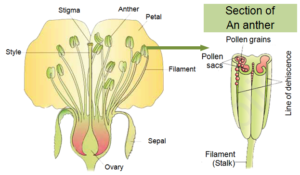About Lesson
Transverse section of an anther:-
- The anther is a tetragonal structure consisting of four microsporangia located at the corners, two in each lobe.
- The microsporangia develop further and become pollen sacs. They extend longitudinally all through the length of an anther and are packed with pollen grains.
